15 maps that explain China
China is the world’s most populous nation and the world’s third or fourth-largest country in the world. The People’s Republic of China has the world’s largest army and the 2nd-largest military budget. Today the nation has been described as a potential superpower.
In 2010 China’s economy became the 2nd-largest nation by nominal GDP and developed to the largest by purchasing power parity in 2014. The country is the globe’s fastest-growing influential economy.
China is officially split into 23 provinces, 5 autonomous regions, and 4 direct-controlled Beijing (the capital city), Tianjin, Shanghai (the largest city), Chongqing, and two specific administrative areas – Hong Kong and Macau.
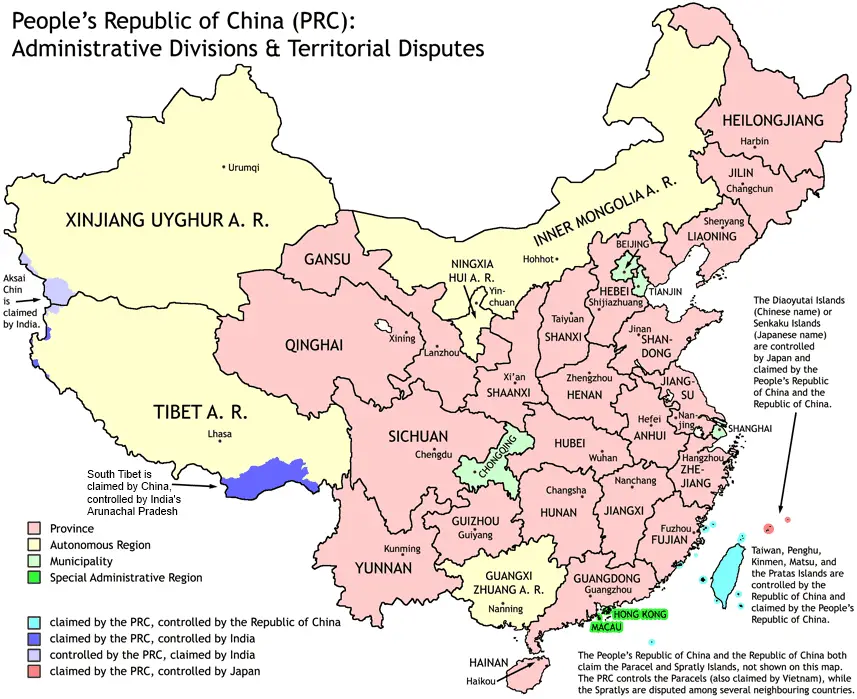
Table of Contents
China appeared as one of the world’s first civilizations in the prolific basin of the Yellow River in the North China Plain. The country was one of the world’s leading economic powers for most of the 2 millennia, from the 1st until the 19th century.
The map below shows the trade routes between China, India, and Rome around the year 100.
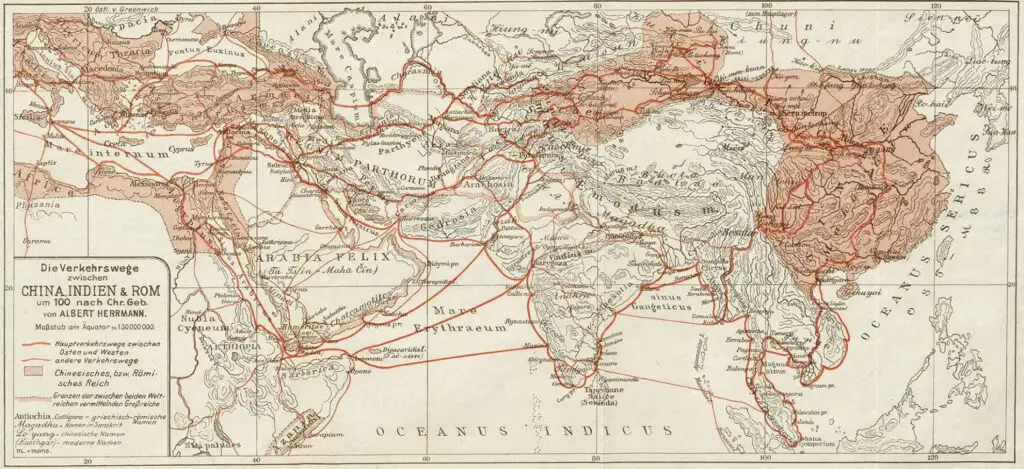
The Great Yuan Dynasty (1271 – 1363) had the largest territory in the country’s history. It embraced a total area of over 12 million km2 (4.6 million km2) at its zenith.
The map below shows all of China’s historical territories of ancient empires and dynasties merged in one map with modern country boundaries.

Population distribution
As beginning as 2 C.E. during the Han dynasty, the Chinese population was around 60 million residents. It is roughly 1/4 of the globe’s population at that time.
Exceptionally accelerated growth of the Chinese population occurred between 1749 and 1811 when the country’s population doubled from 177.5 million to 358.6 million. Nowadays, the population of China is more than 1.4 billion people.
The population density in China is 137 people per sq km. It is similar to those of nations like Denmark (excepting Greenland) or the Czech Republic. But, the overall population density of China hides significant regional differences.

The Heihe-Tengchong Line, also called the Aihiu-Tengchong Line, is an imaginative line that splits China into two roughly equal sections with different population densities.

About 94% of the Chinese population lived east of the Heihe–Tengchong Line, which makes up just 43% of the whole land area. Еstern part of China has almost the same population density as Japan (280 people per sq km).
The most densely populated areas covered the Yangtze River Valley, Sichuan Basin, North China Plain, Pearl River Delta, and Shenyang’s industrial region.
Transportation system
The spatial distribution of the population determines the peculiarities of the development of China’s transport system. Especially remarkable is the rate of construction of high-speed railroads in the country.
In 2008, the Chinese built their first railway system to join Beijing and Tianjin, the same year that Californians voted in favor of their own high-speed rail network. Since then, China has invested $360 billion to construct 22,000 kilometers (13,670 miles) of high-speed railways — more than every other nation combined — and is expected to add another 15,000 kilometers (9,321 miles) by 2025.
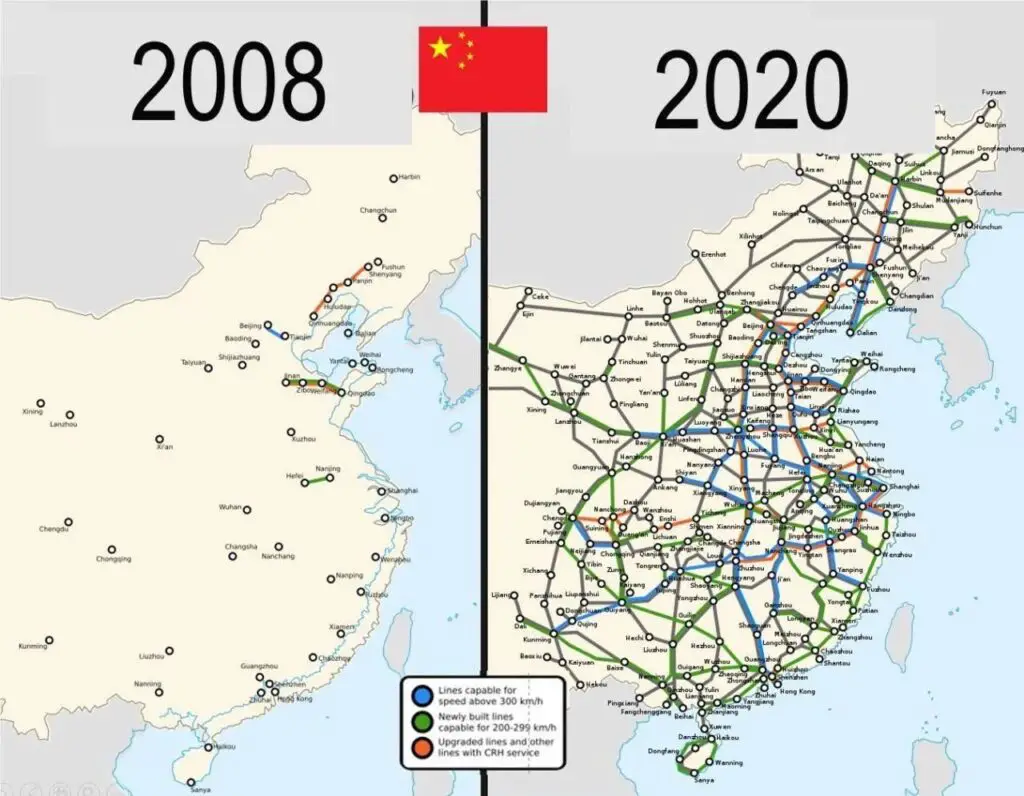
Ethnic groups and Languages
The Han Chinese are the most populous ethnic group in China, covering, according to the 2020 census, around 91.11% of its mainland population. Other ethnic groups in China include the Zhuang, Hui, Manchus, Uyghurs, and Miao. They make up the 5 most notable ethnic minorities in mainland China, with almost 10 million or more populations. In addition, the Yi, Tujia, Tibetans, and Mongols each have populations within 5 and 10 million.

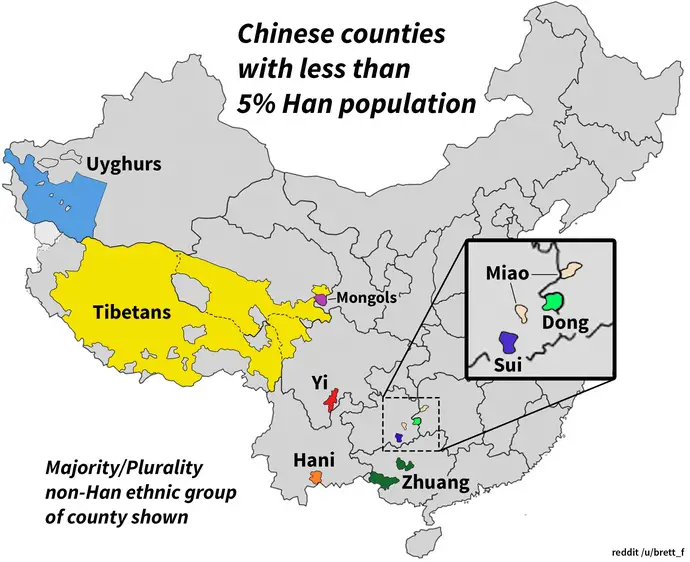
The dominant language in China is Mandarin. Nine hundred fifty-five million Chinese spoke some dialect of Mandarin as their first language, accounting for 71% of the country’s population. The Chinese languages are typically divided into seven main language groups. These groups differentiate as much from each other phonetically and morphologically as do English, German and Danish.
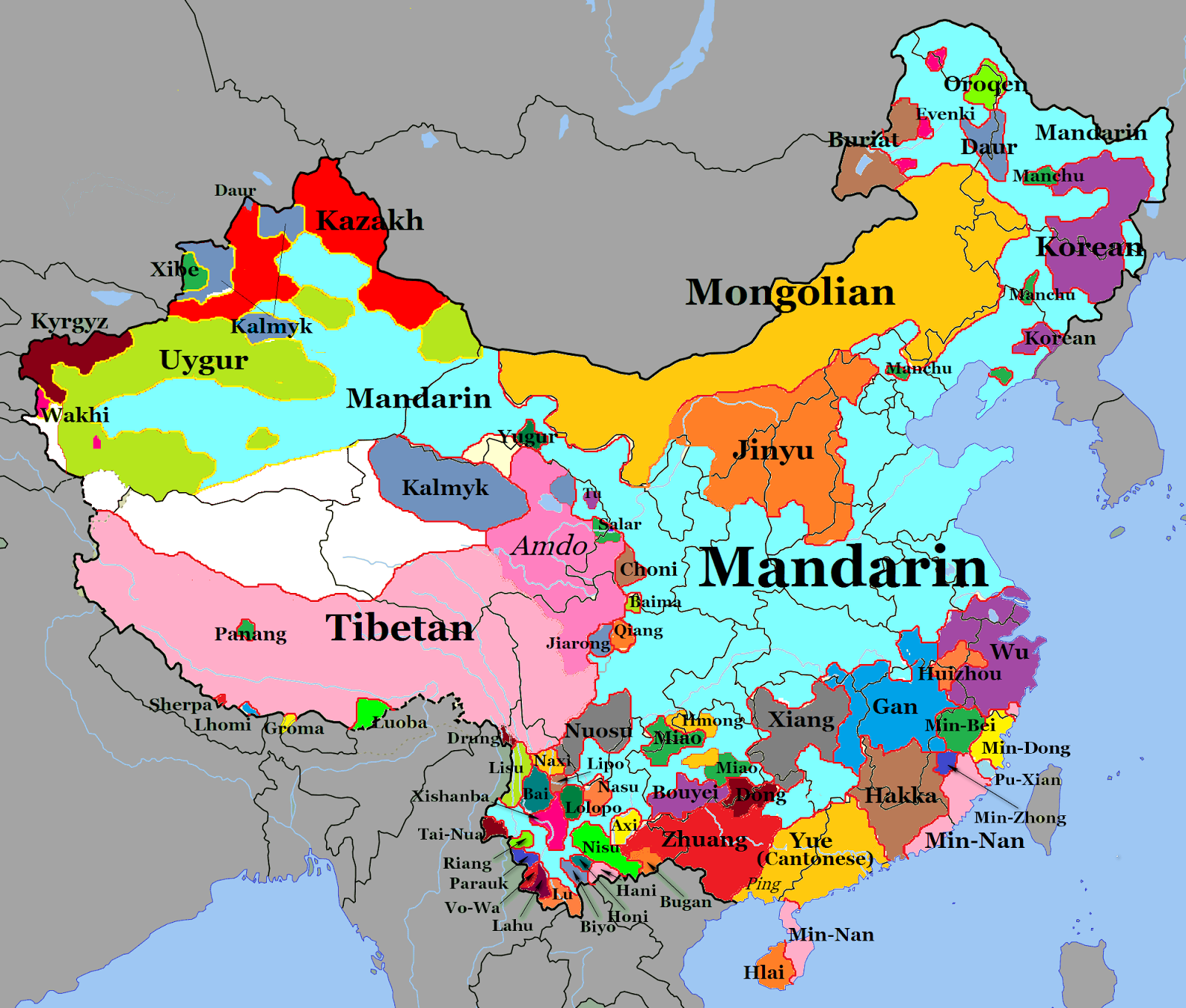
Religion
China authoritatively espouses state atheism, but many Chinese residents follow some Chinese folk religion in reality. At the beginning 21 century, there has been growing official recognition of Chinese folk religion and Confucianism as part of China’s cultural inheritance. According to national studies carried at the beginning 21st century, more than a billion people (80% of China) practice Chinese folk religion. Moreover, the authority formally admits 4 religions: Buddhism (15%), Taoism (10%), Christianity (2.5%), and Islam (0.8%).
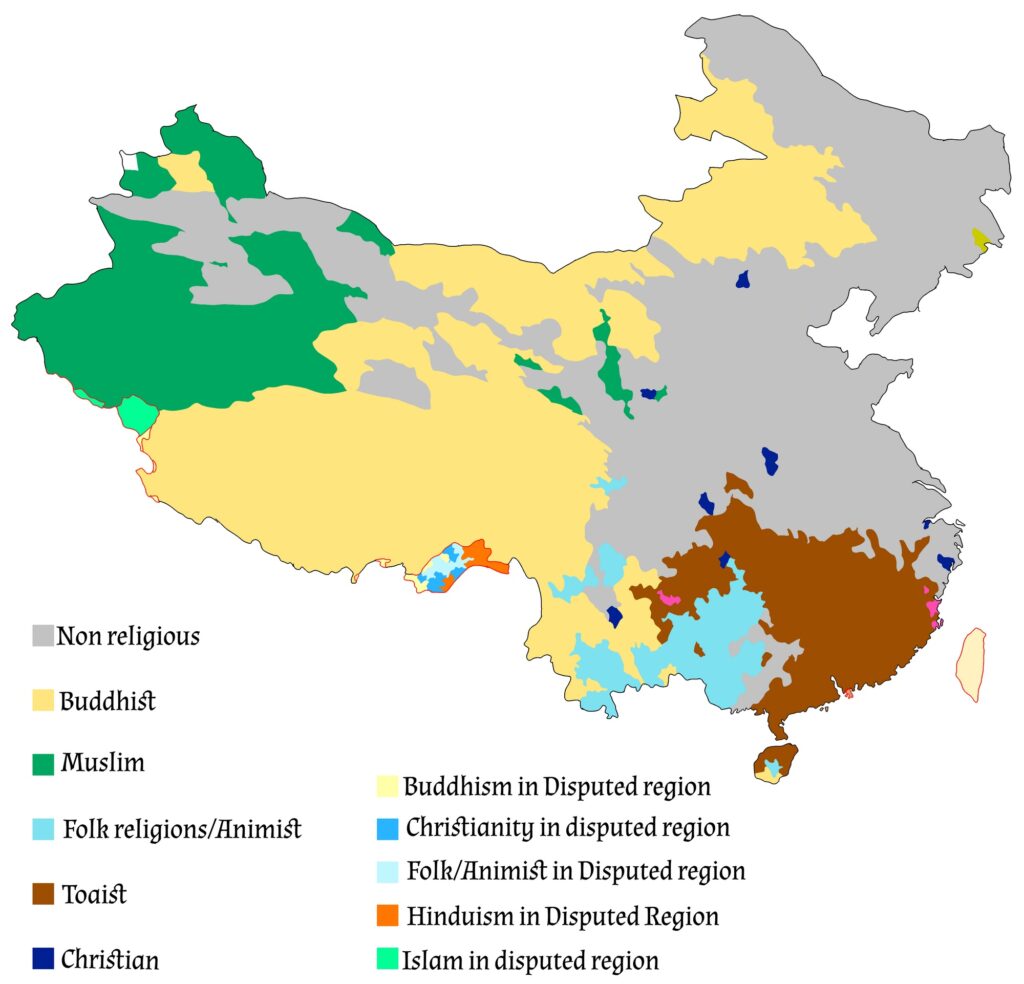
Many religious controls in China are imposed nationwide, and instances of persecution have been recorded in every one of China’s 31 provinces, autonomous regions, and providence-level municipalities. Still, the degree of persecution and the primary groups vary from region to region. According to the data on persecution and detention available from Chinese court documents, the most vigorous religious persecution has happened in the provinces: Tibet, Xinjiang, Heilongjiang, Jilin, Liaoning, and Shandong.
Politics
Since 1941, China is nominally becoming a unitary one-party socialist republic. The United Nations recognized the People’s Republic of China in 1971; until this year, Taiwan (Republic of China) represented China as a member of the United Nations.
These maps show international recognition of the People’s Republic of China vs. the Republic of China over time.
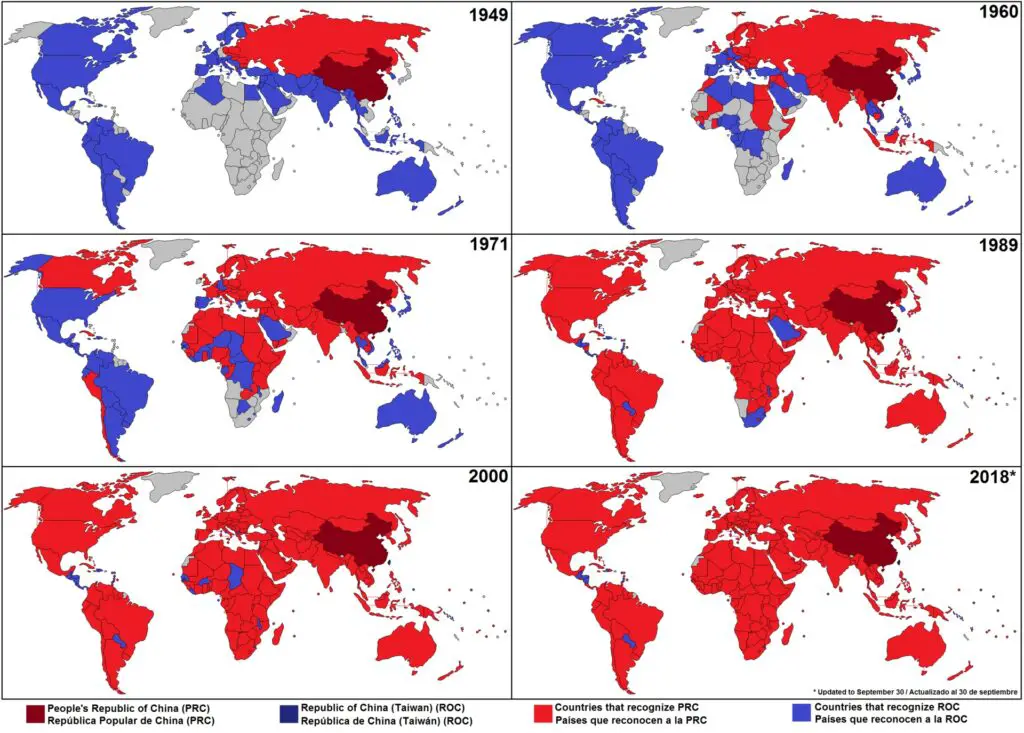
China has 17 territorial disagreements with its neighbors on land and sea. China has disputes with Bhutan, Brunei, Kazakstan, Kyrgistan, Laos, Mongolia, Myanmar, Nepal, Russia, Tadjikistan, Indonesia, the Philippines, Singapore, Vietnam, Japan, Singapore, South Korea, North Korea, Singapore.
The map below shows countries with territorial disputes with China.
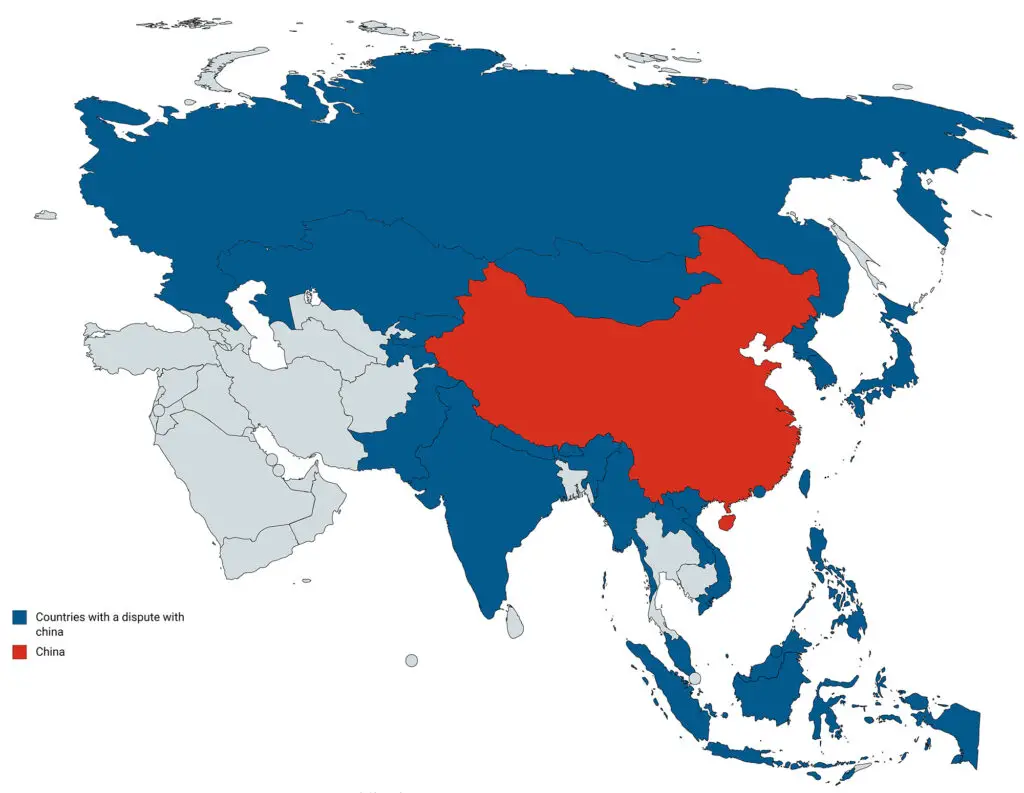
Moreover, some current separatist movements in China rise from the country’s ethnic and political issues. The most significant secessionist activities in China are East Turkestan, Tibet, Inner Mongolia, Hong Kong, and Taiwan. But Taiwan has never been ruled by the People’s Republic of China.
As the largest and most influential nation in East Asia, China has substantial and expanding influence. One long-term intention of the Chinese government is to have China replace the United States as the most influential nation in Asia.
Nowadays, evident signs of China’s rising political strength and involvement are noticeable worldwide, from Greenland to Argentina and Mongolia to South Africa.
In 2019, China exceeded the U.S. in the size of its diplomatic system consisting of 276 diplomatic posts, including consulates, embassies, and permanent commissions to international organizations.
Economy
The China economy is a developing market-oriented manufacturing economy that combines economic planning and strategic five-year plans. State-owned companies are considered for over 60% of China’s market capitalization and produced 40% of China’s GDP of US$15.66 trillion in 2020.
As of 2020, China is the base of the largest corporations in the Fortune Global 500, and 129 are headquartered in China. The country is also based the highest number (more than 200) globally, privately held technology startups, each with a valuation of over $1 billion.
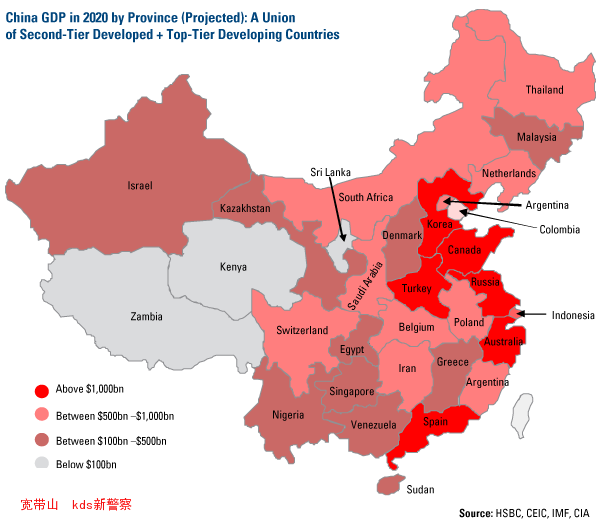
China has the globe’s second-largest economy when ranked by nominal GDP and the world’s largest economy since 2014 when estimated by Purchasing Power Parity. According to the Global Wealth Report by Credit Suisse Group, China exceeded the U.S. in the wealth of the top 10% of the world’s population. Moreover, according to forecasts, China will become the globe’s largest economy in nominal GDP by 2028.
China’s global investments have increased dramatically in recent years, exceeding the U.S. as the largest trading partner with many Latin American and African nations and challenging America’s strategic leadership worldwide.
The interactive map below shows China’s global development footprint.
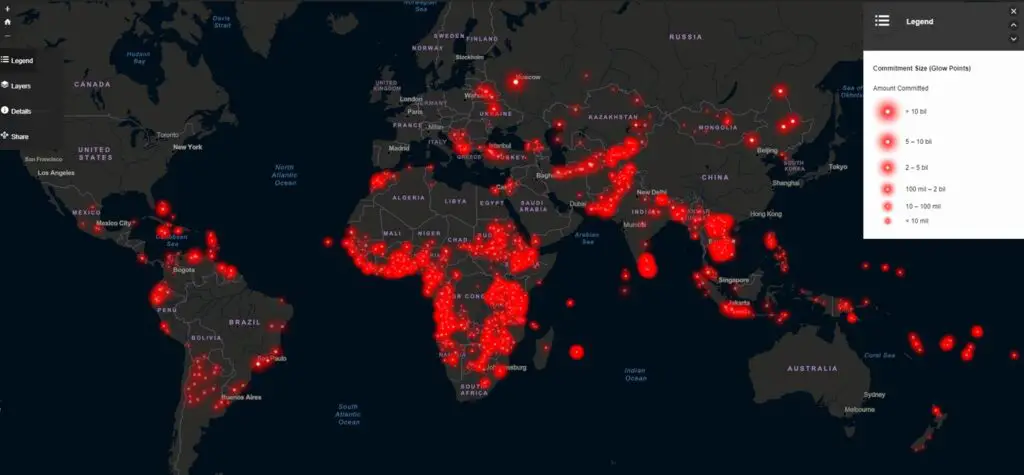
The map below shows the top import partners of African countries.
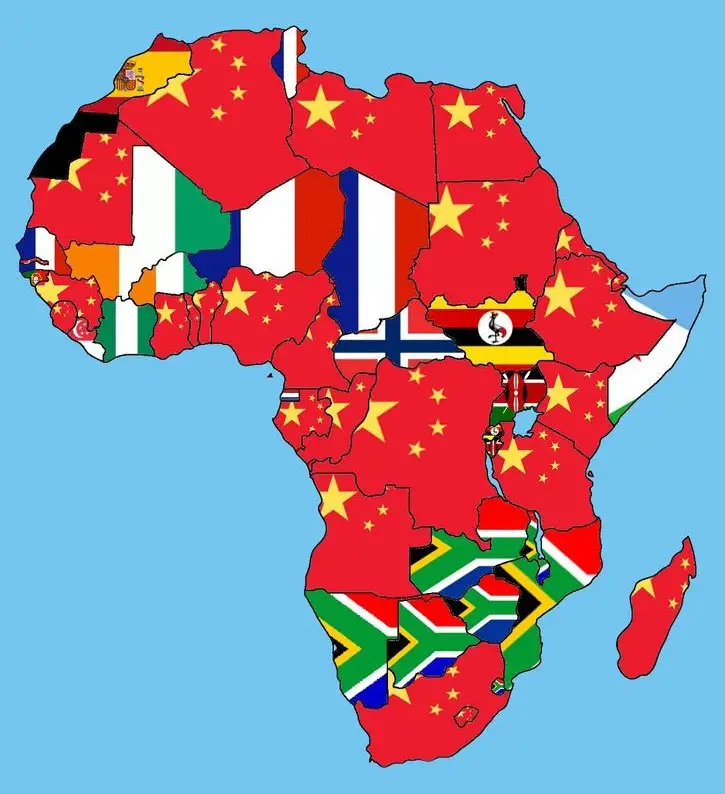
China is assumed to spend over $1 trillion on its ambitious global infrastructure and connectivity program Belt and Road Initiative – 7 times the size of the Marshall Plan in real dollars. This ambition attempts to create new markets for Chinese goods and expand China’s economic connectivity in 130 nations worldwide, comprising more than 60 percent of the globe’s population and 1/3 of global GDP, including 40 out of 54 African countries.




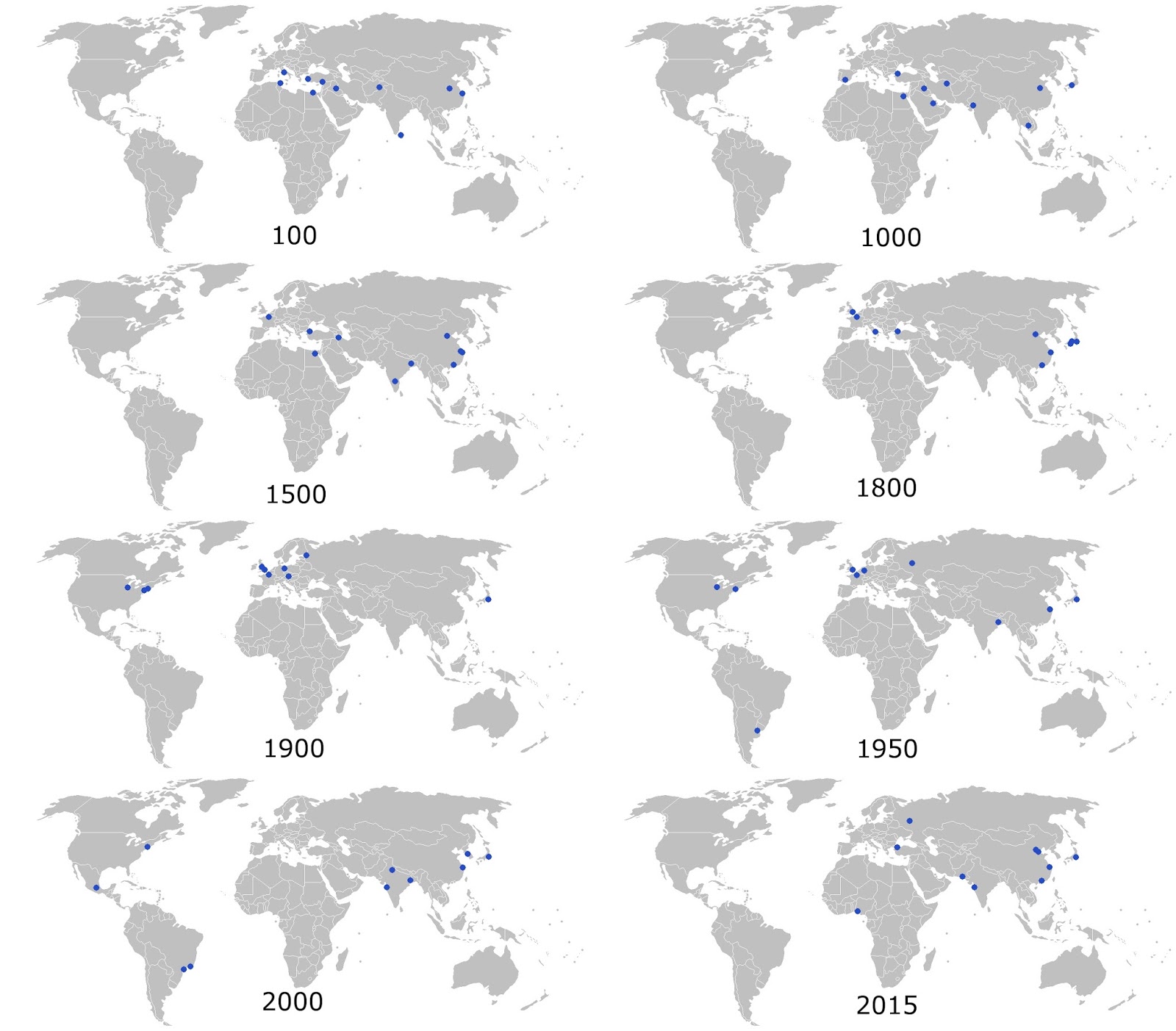

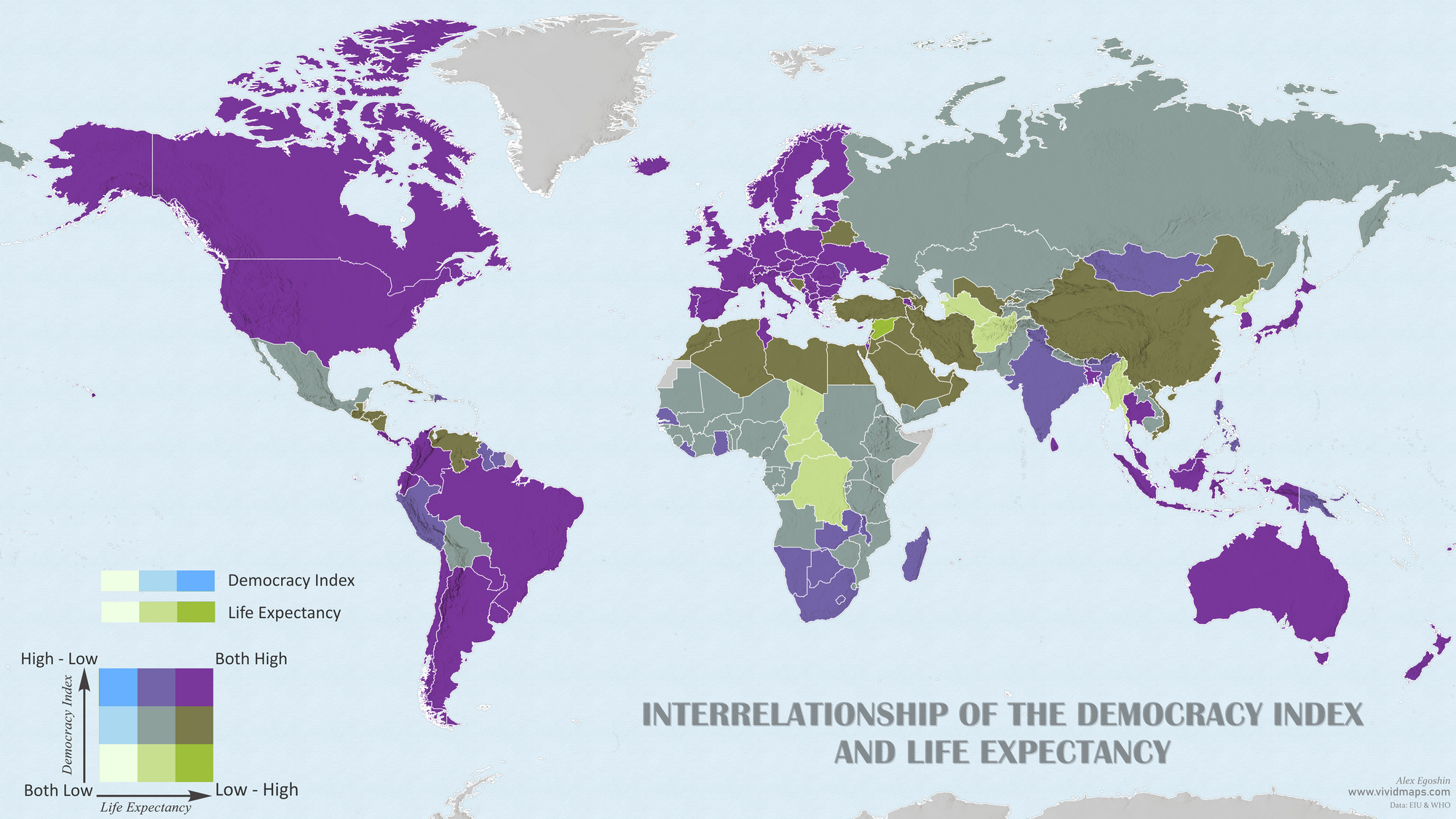


“The Chinese territory after the victory against Communists and Russian” (Chiang kai-shek’s ultimate plan)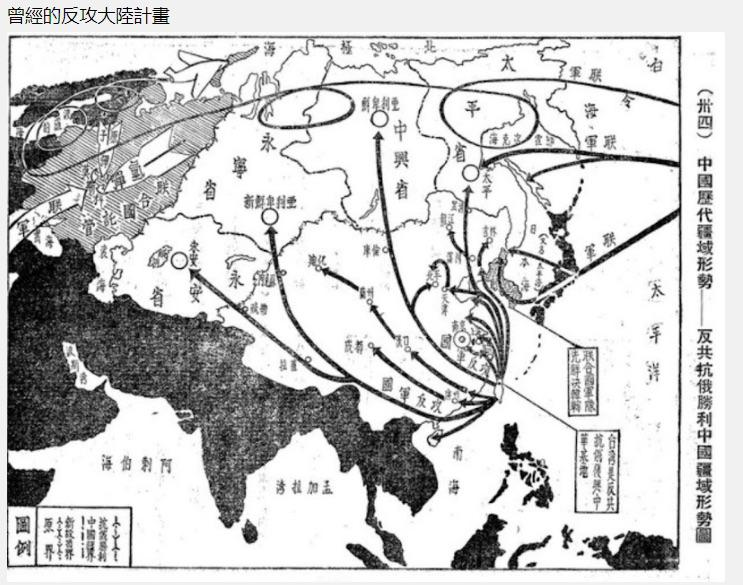
Chinese Infrastructure Projects in Latin America and the Caribbean
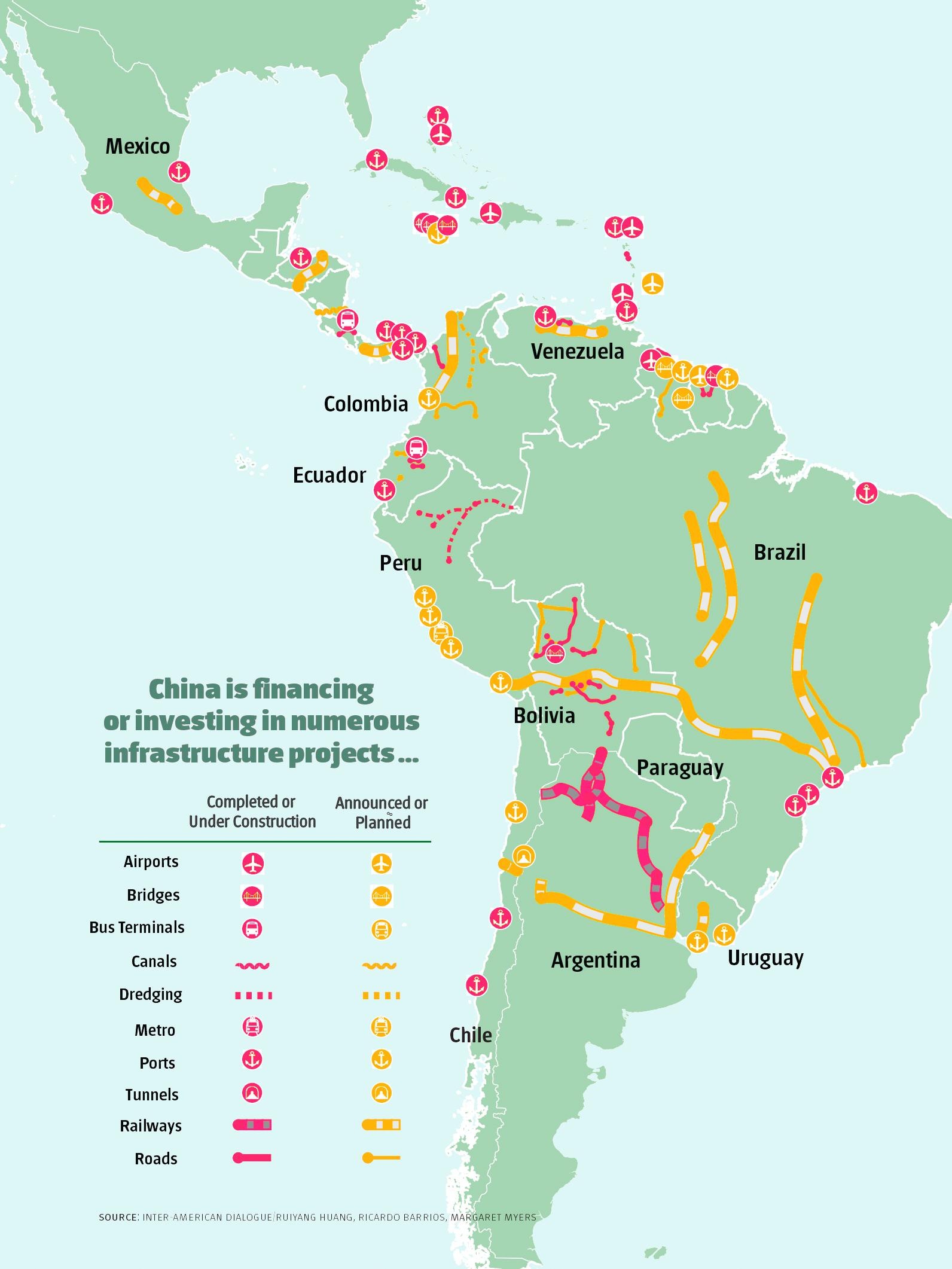
Taiwan and Hong Kong Macau are both part of China